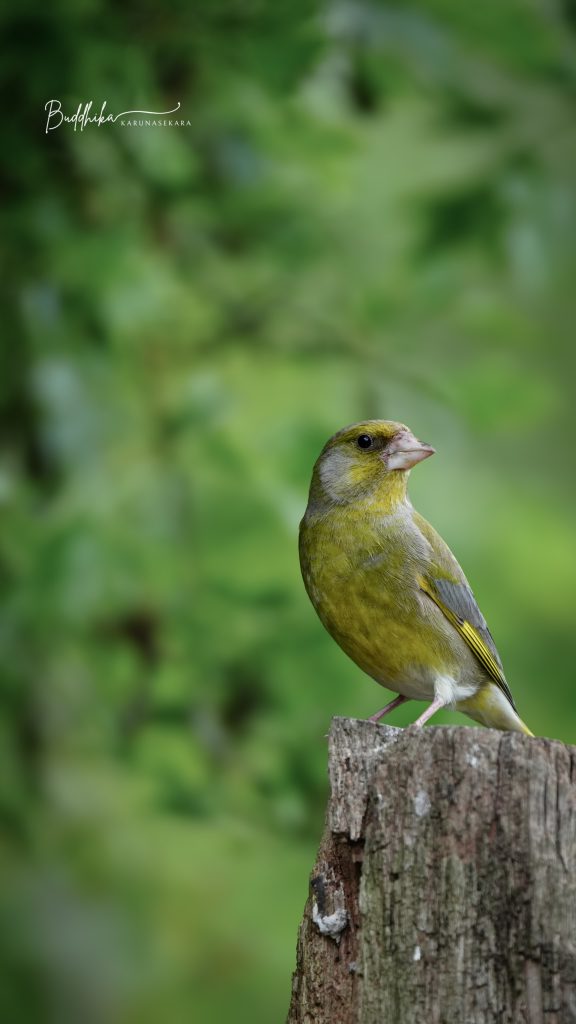
Perched on feeders or darting between hedgerows, the European Greenfinch cuts a distinctive figure in British gardens. With its olive-green body and flashes of yellow on wings and tail, this stocky finch might not be as showy as some of its relatives, but it has pecked out its niche in the rich soil of European folklore.
Unlike the legendary phoenix or the poetic nightingale, the Greenfinch’s role in our cultural tapestry is more subtle. It is woven through with threads of everyday magic and countryside wisdom. Its presence in our stories and traditions speaks to a long-standing connection between people and the natural world that surrounds them.
In British folklore, the Greenfinch often appears as a harbinger of good fortune. Its arrival in gardens was seen as a positive omen, particularly for household matters. Old wives’ tales suggest that a Greenfinch nesting near a home would bring prosperity and contentment to its inhabitants.
The bird’s Latin name, Chloris, comes from the Greek word for green, and in Greek mythology, Chloris was the goddess of flowers. This connection has led some to view the Greenfinch as a symbol of nature’s bounty and the changing seasons.
In some parts of rural Britain, the Greenfinch’s distinctive wheezing call earned it the nickname “Green Grocer”. This moniker found its way into local rhymes and sayings, embedding the bird in regional dialects and traditions.
The Greenfinch’s habit of gathering in small flocks, especially in winter, has inspired various folklore interpretations. In some areas, it was believed that the size of Greenfinch flocks could predict the severity of the coming winter—larger flocks supposedly heralded a harsh season ahead.
In Celtic mythology, green birds were often associated with the Otherworld and seen as messengers between realms. While not specifically named in many tales, the Greenfinch’s colouration would have placed it in this mystical category, potentially seen as a bridge between the mortal world and the fairy realm.
The Greenfinch’s fondness for seeds, particularly those of the sunflower, has led to its frequent appearance in garden folklore. Gardeners often viewed the bird’s presence as a mixed blessing—while it might help control weed seeds, it could also be a bit too enthusiastic about newly planted vegetable patches!
In some European countries, particularly in rural areas, the Greenfinch was seen as a weather prophet. Its song was said to predict rain, leading to sayings like “When the Greenfinch sings, the rain it brings”.
While not as prominent in Christian symbolism as some other birds, the Greenfinch’s green plumage sometimes led to its association with hope and new life in religious contexts. In some areas, it was considered good luck to spot a Greenfinch on Christmas Day, symbolising the promise of spring to come.
Today, as we watch these charming birds at our feeders or flitting about in parks, we’re observing more than just nature at work. We’re witnessing a creature that has quietly accompanied us through generations, its presence woven into the rich tapestry of European folklore.
